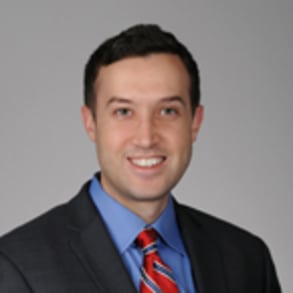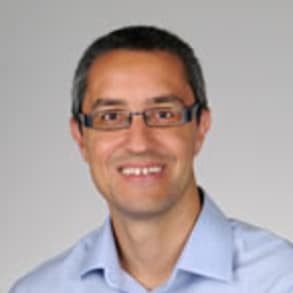Tumor-treating fields (TTFields) are a noninvasive therapy that was approved for the treatment of recurrent glioblastoma in 2011 and newly diagnosed glioblastoma in 2017. They have been shown to extend survival in these patients by about five months. TTFields are low-intensity, alternating electric charges that prevent proliferation of cancer cells by disrupting mitosis. Patients wear a battery-operated cap containing an array of ceramic discs, which deliver the fields to targeted regions of the brain. The cap and its placement are customized to the patient’s tumor. To be effective, the cap must be worn at least 18 hours a day. Although the therapy requires a lifestyle adjustment, it is well tolerated by most motivated patients.
In this video, two MUSC Hollings Cancer Center neuro-oncologists, Scott M. Lindhorst, M.D., and David M. Cachia, M.D., discuss their experience with TTFields and the clinical trials they are leading in patients who have failed Avastin therapy, patients with lung cancer that has metastasized to the brain and patients with lower-grade gliomas.
Related Presenters

Scott Lindhorst, M.D., joined MUSC in August 2013 as an assistant professor. His practice is focused on neuro-oncology. His primary appointment is in the Department of Neurosurgery, and he holds a dual appointment as an assistant professor ...

David Cachia, M.D., is a fellowship trained neuro-oncologist who treats patients with brain and spine tumors ranging from relatively slow growing primary brain tumors, like meningiomas, to more malignant tumors, like glioblastoma, and ...